
In my SEO career, I’ve built content strategies for everything from niche blogs to seven-figure SaaS sites.
One thing I’ve learned?
Publishing without a clear strategy is one of the fastest ways to waste time and budget.
In this guide, you’ll learn how to build a content strategy that:
- Prioritizes high-impact topics based on SEO and business value
- Uncovers content gaps through competitive analysis and keyword research
- Creates a clear, scalable workflow with defined processes and guidelines
Even better?
You’ll get a free content strategy template to help you put your plan into action, whether you’re building strategies for clients or growing your own brand.
But before we dive into building your roadmap, let’s get clear on what strategy actually means.
What Is a Content Strategy?
A content strategy is a plan for creating, distributing, and managing content that serves your audience and supports your business goals.
Every effective content strategy includes:
- Audience research: Who you’re targeting and what problems they need solved
- Content audit: What you have now and any gaps that exist
- Topic prioritization: Which subjects will drive the most business impact
- Distribution plan: How and where you’ll share your content
- Success metrics: The specific numbers that prove your content is working
This strategic approach helps you create content that performs better and focuses your time and budget on topics that attract, retain, and convert your target audience.
Download Our Free Content Strategy Template
Download our Content Strategy Template now to follow along with the steps below.
It’s free, customizable, and built to scale with you.
You’ll find pre-built tabs for every step we cover here, including:
- Persona building
- Content audits and gap analysis
- Editorial calendar and workflow tracking
- SEO, keyword optimization, and content guidelines
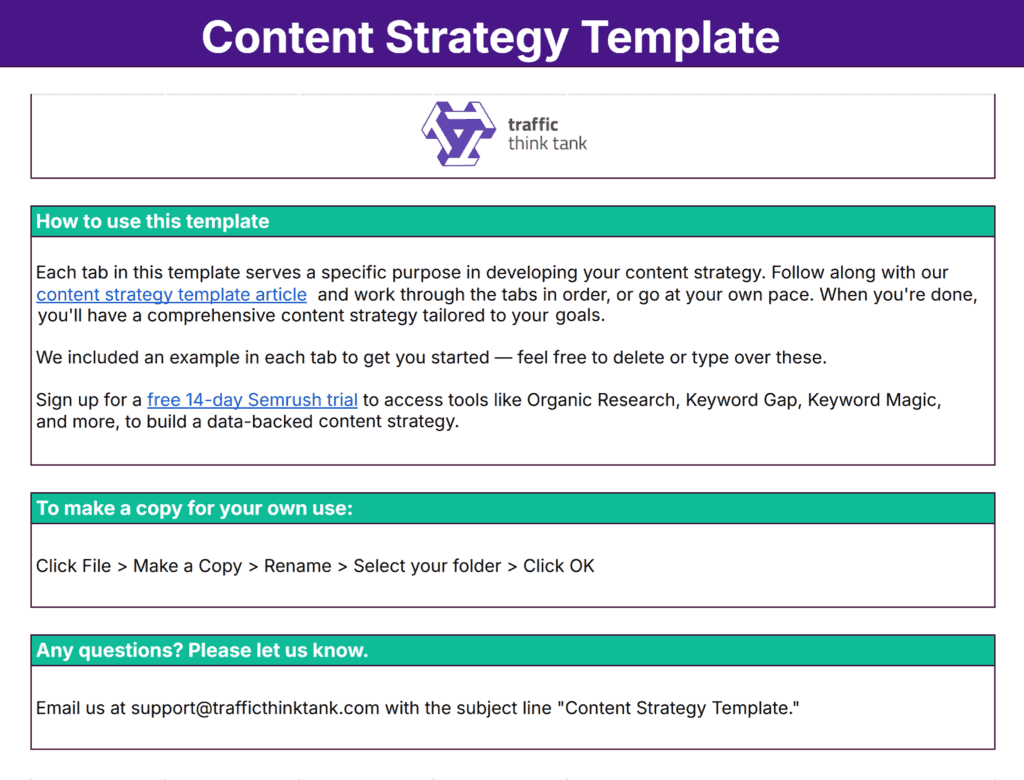
Fill out the template as you read, and you’ll have a complete strategy by the end of this article.
1. Create Buyer Personas
If you want your content to actually connect with your audience, you need to understand them.
Not just their age or job title, but their concerns, motivations, and search habits.
In the Buyer Persona tab of the content strategy template, you’ll find fields for:
- Name and role
- Basic info like age, location, and industry
- Values, interests, and how they make decisions
- Pain points, goals, and what’s stopping them from converting
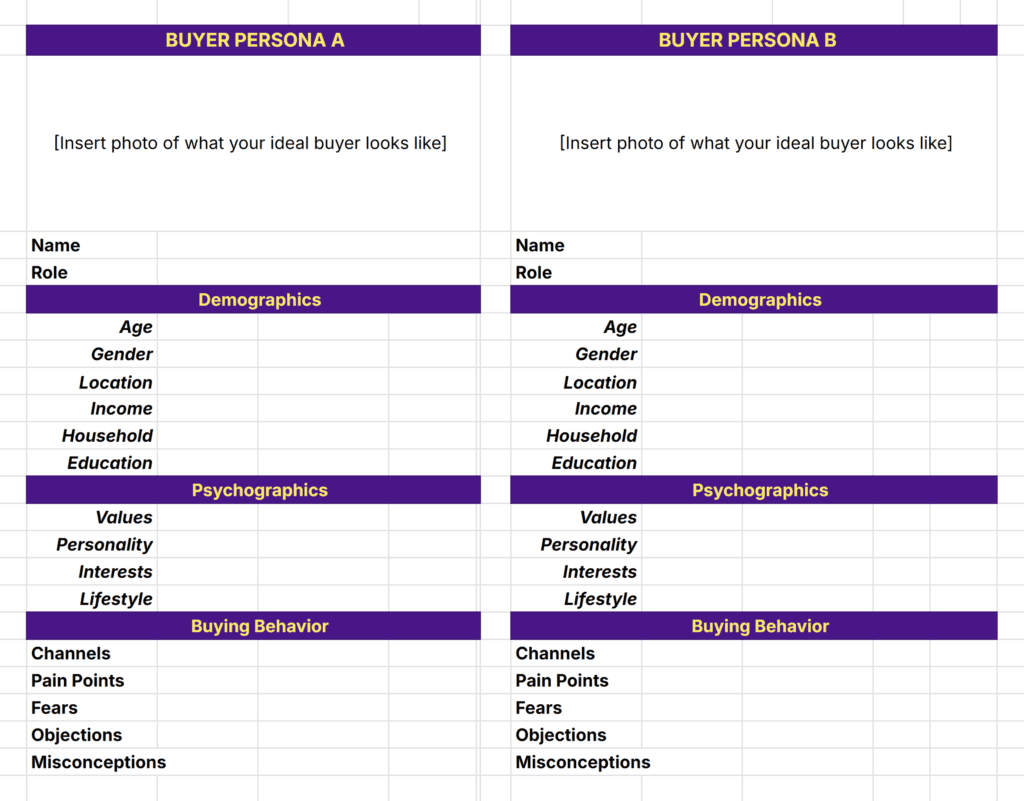
To gather this information, use Google Analytics (GA), Google Search Console (GSC), and customer conversations.
Note: If you have sufficient website traffic (500+ monthly visitors), GA can provide valuable demographic and interest insights.
If you’re a newer site or have limited traffic, focus on direct customer research methods like interviews, surveys, and support ticket analysis first.
Let’s start with Google Analytics.
Click on “Reports” and then follow this path:
“User” > “User attributes” > “Overview.”
Here, you’ll see key demographics like age, location, and interests.
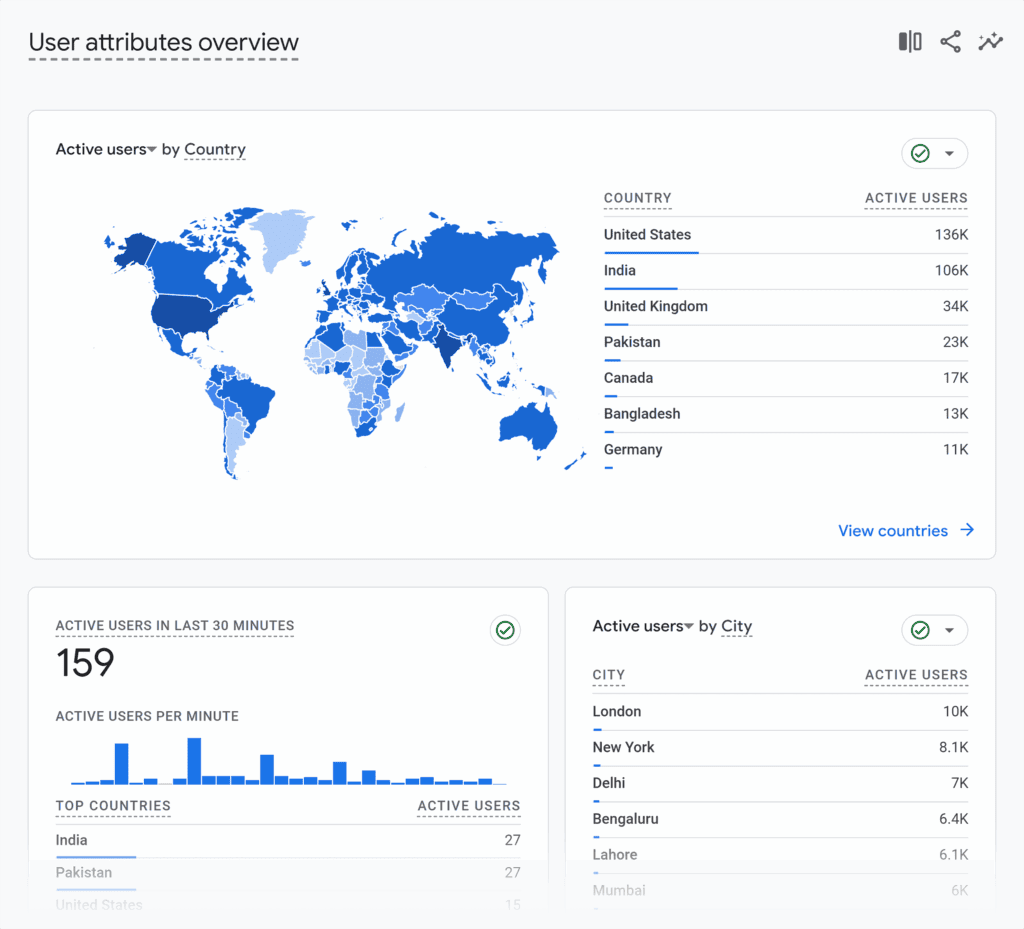
To understand which pages resonate most with your audience, go to “Reports” > “Engagement” > “Pages and screens.”
This report shows how people interact with individual pages on your site.
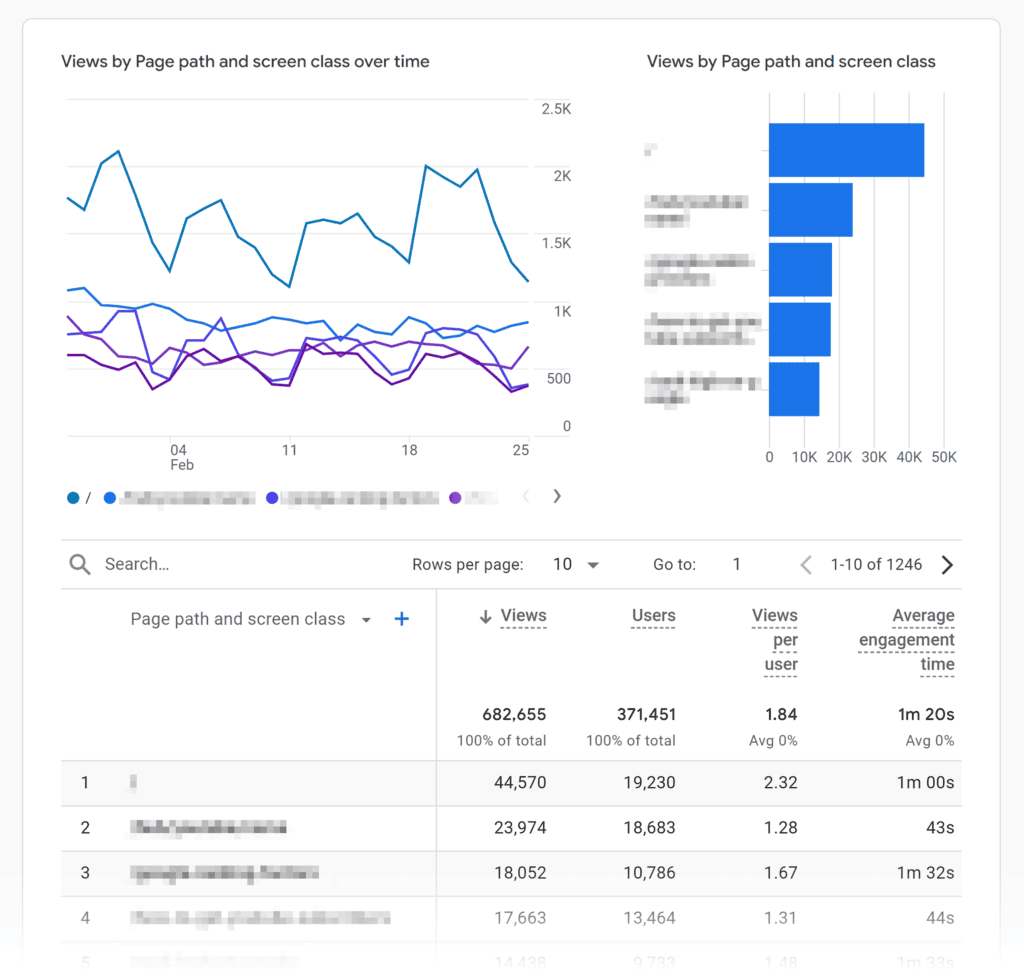
Focus on average engagement time and views to pinpoint which topics resonate. These pages often reflect your audience’s priorities even if they’re not the ones you expected.
Next, jump into Google Search Console to understand how people find your site.
Head to the “Performance” > “Search Results” > “Queries” tab. These search terms show what people type into Google before landing on your site.
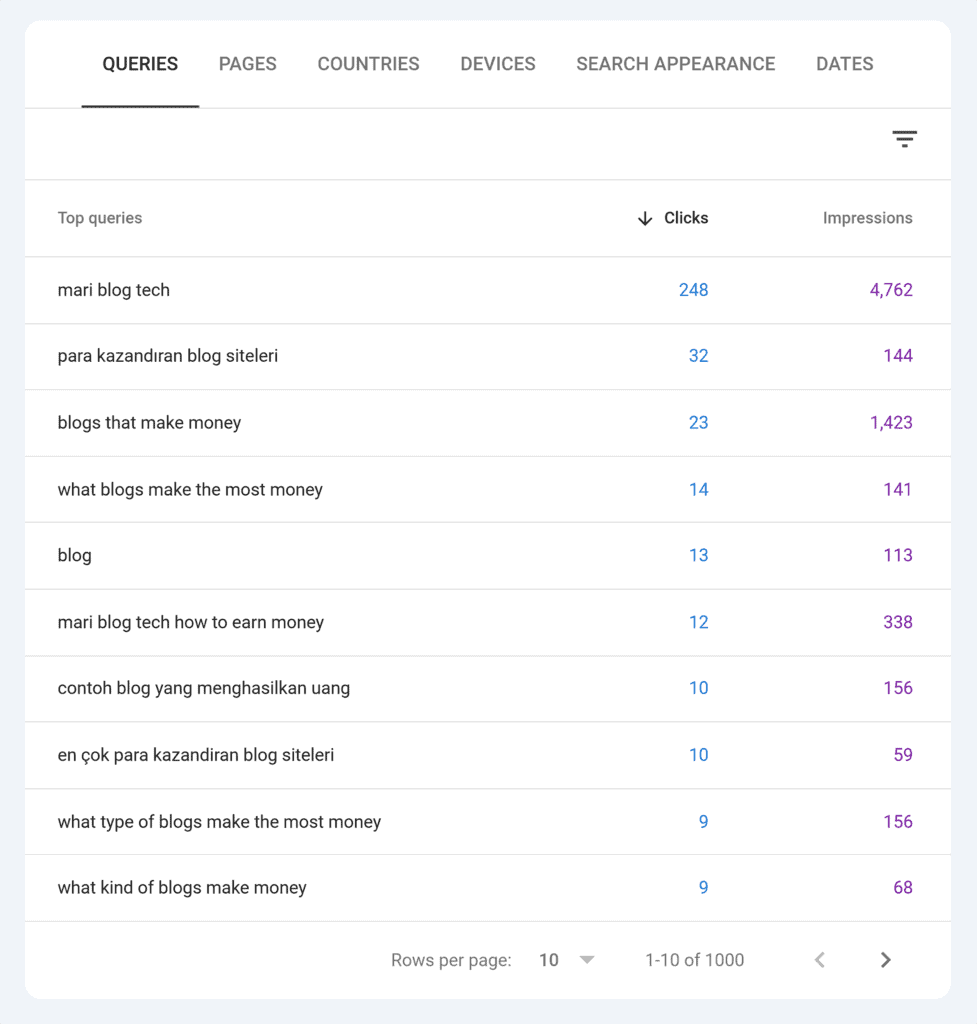
Look at queries with high impressions. This gives you insight into your audience’s questions and motivations.
For example, if a query like “is grass-fed beef good for you” shows up often, it signals a curiosity or concern that could reflect a core audience need, even if the clicks are low.
It also reveals your visitors’ mindset: they care about health and want to find reputable information to back up claims.
You can also pull information directly from support tickets, email FAQs, or interviews. Common questions like “What’s the difference between grass-fed and grain-fed?” or “How do I know if the beef is actually grass-fed?” reveal knowledge gaps and concerns.
These questions show your audience values transparency and needs education before they’ll trust your product. Use this information to identify pain points and motivations for your buyer persona.
Now, add the info you’ve compiled to the “Buyer Persona” tab of the content strategy template.
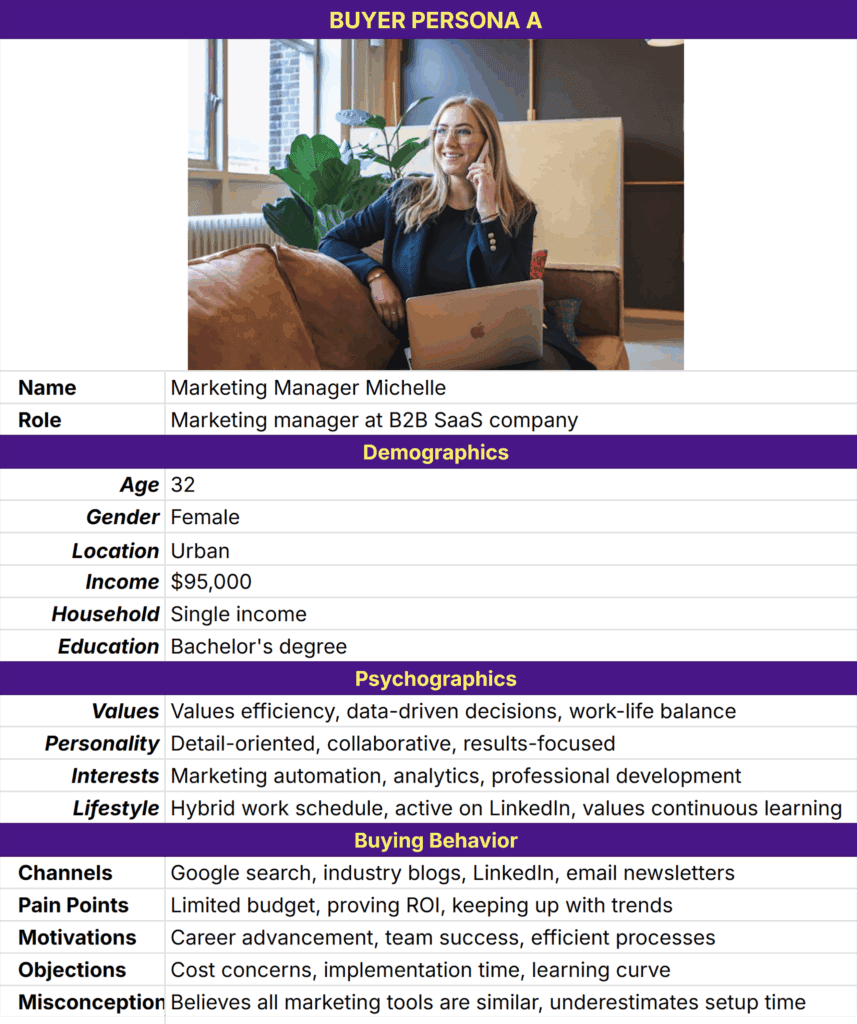
Don’t skip this step — building a persona will shape many aspects of your content strategy, including the tone of voice, content topics, and content types.
2. Set Clear Content Goals That Support Your Business
Once you’ve nailed the who, it’s time to define the why. Your content strategy should always support a business goal, whether that’s growing traffic, generating leads, or driving conversions.
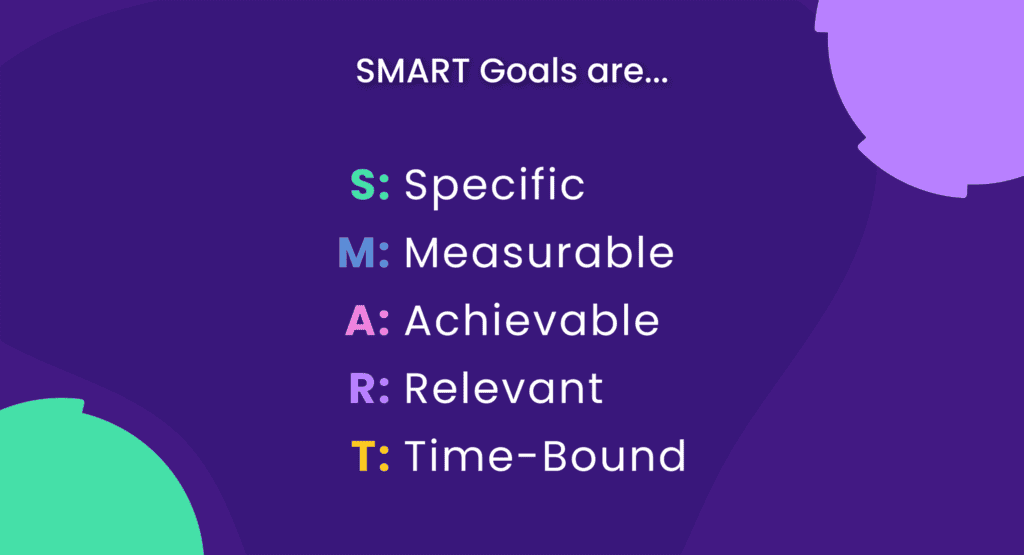
Use the SMART framework to turn vague objectives into actionable targets.
For example, here’s how to make a vague goal like “get more traffic” a SMART goal:
- Specific: Increase organic blog traffic from the U.S.
- Measurable: Track unique pageviews and engagement time in Google Analytics
- Achievable: Aim for a 20% increase based on last quarter’s trend
- Relevant: This traffic supports lead gen efforts for our new product line
- Time-bound: Hit the goal by the end of Q4
The final SMART goal would look something like: Increase organic blog traffic from U.S. users by 20% by the end of Q4, tracked in GA.
Each goal should also tie back to a meaningful SEO KPI.
If you’re focused on traffic, use Google Analytics to track visits and engagement. If leads are the priority, lean on your CRM. For keyword performance and ranking improvements, use a position tracking tool.
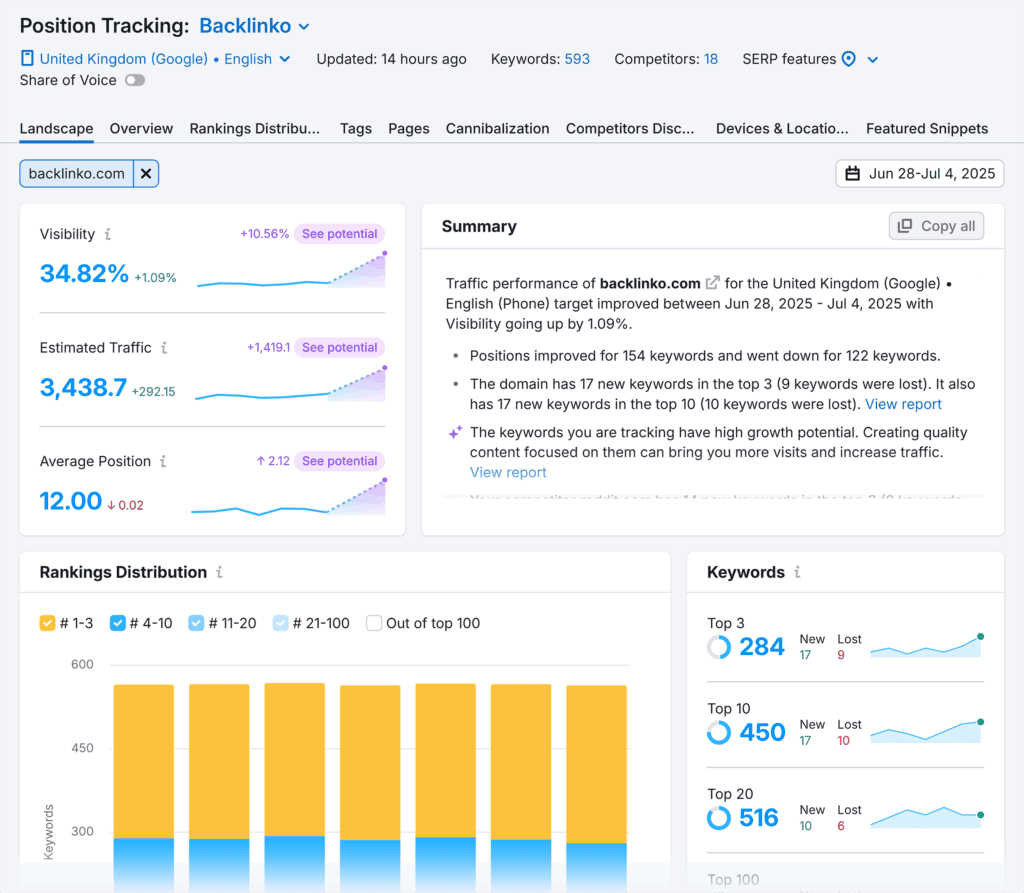
Each goal should also connect to the right funnel stage. Are you trying to attract new people, nurture existing prospects, or convert ready-to-buy leads? That context shapes what you create and how you measure success.
In the Content Goals tab of the content strategy template, define your goal, the tool you’ll use to measure it, and the business objective it’s going to help you accomplish.
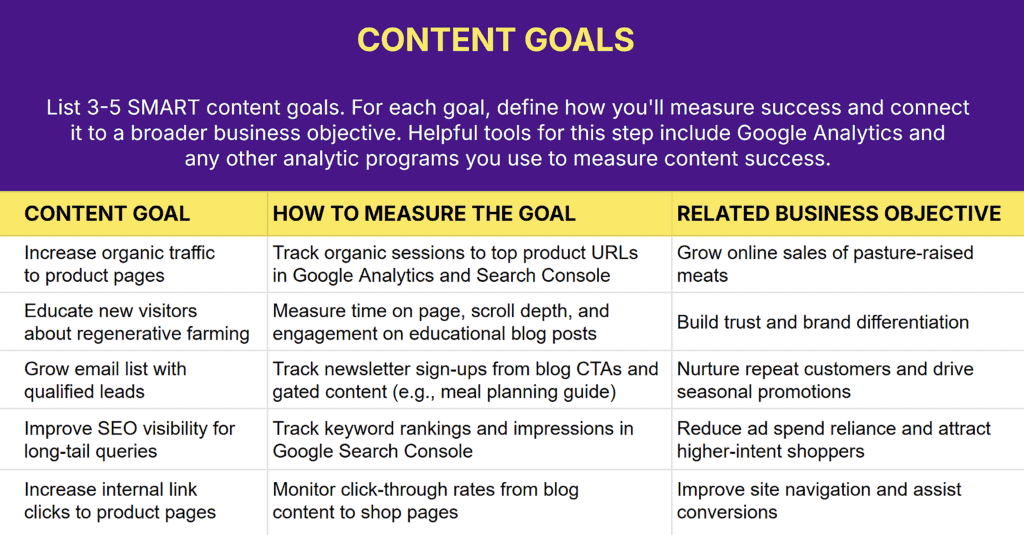
Pro tip: Pick one or two core goals to focus on per quarter and revisit them during your content performance reviews.
For instance, for a regenerative farming company, the goal would be simple: sell more grass-fed meat.
So, we would focus on identifying the keywords people search when ready to buy and optimizing product pages for them. We might also set secondary goals to grow their email list and educate customers about their sourcing practices.
3. Conduct a Content Audit
A strong content strategy starts with knowing what’s already working. It’ll help you decide what to keep, update, or remove, so every page on your site serves a clear purpose.
Start by exporting a full list of your site’s URLs.
Use tools like Screaming Frog, Ahrefs, or Google Search Console for this task. If your site is small, you can pull the list straight from your sitemap.
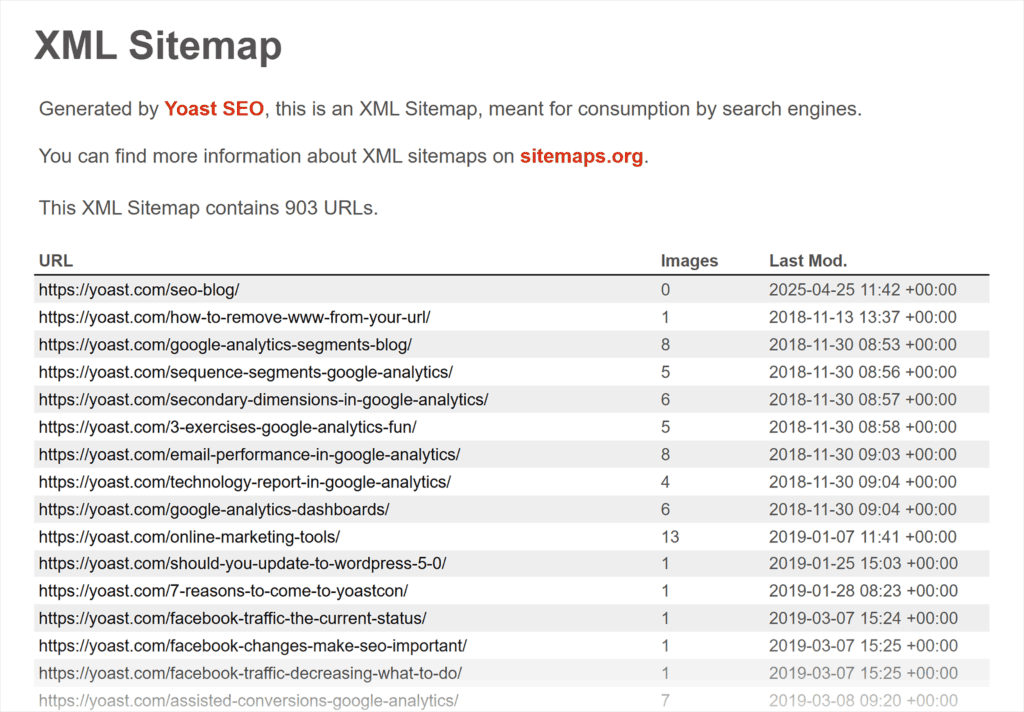
Once you have your URLs, review each page’s performance.
Look at metrics like organic traffic, average time on page, bounce rate, and any conversions it helps drive. I also check keyword rankings using Semrush or Ahrefs to understand whether the page ranks for terms that matter.
Next, evaluate whether the content is accurate, useful, and aligned with your current goals. Does it still reflect your brand and serve a clear intent? If not, it may need to be updated, merged with another page, or cut entirely.
From there, sort everything into four potential “Actions”:
- Keep: High-performing content that needs no changes
- Update: Good content that needs refreshing, better keywords, or internal links
- Remove: Outdated or low-value content that should be deleted
- Combine: Content that should be combined with another article and redirected
As you evaluate each page, add the URL to the Content Audit tab of our content strategy document example.
Make any necessary notes about each page and select an action. This gives you helpful insight into what new pages you’ll need to plan for your strategy.
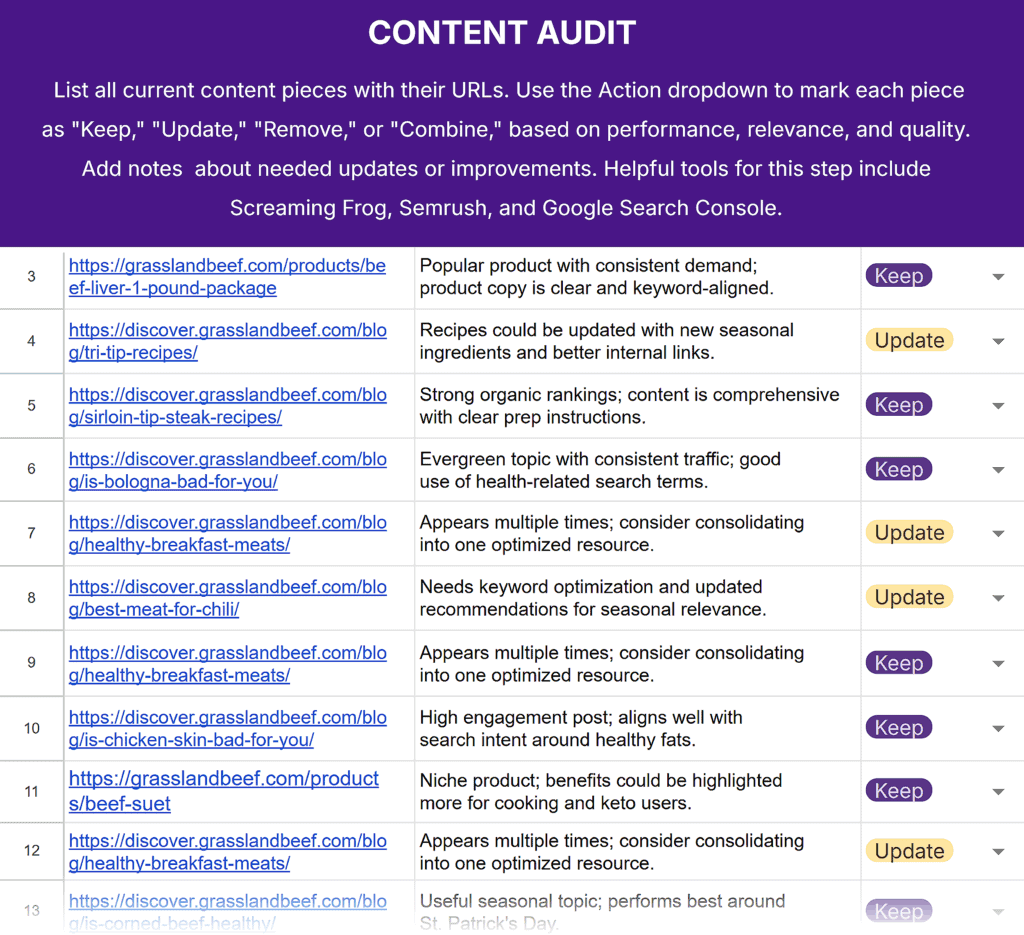
4. Analyze the Competition
One of the best ways to improve your content is to study what your direct competitors are doing well and where they’re falling short. I use Semrush to find top competitors and learn from their highest-performing pages.
Here’s how to do it using Semrush’s Organic Research tool.
Note: A free Semrush account gives you 10 searches in this tool per day. Or you can use this link to access a 14-day trial on a Semrush Pro subscription.
Enter a competitor’s domain and select your country.
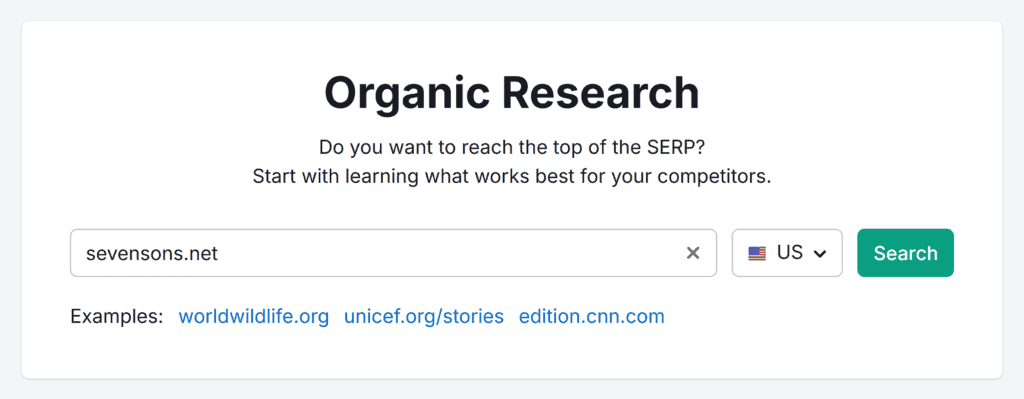
Then, click the “Competitors” tab.
Look at the Competitive Positioning Map to see who your competitor’s top competitors are, based on their estimated organic traffic and number of keywords in Google’s top 20.
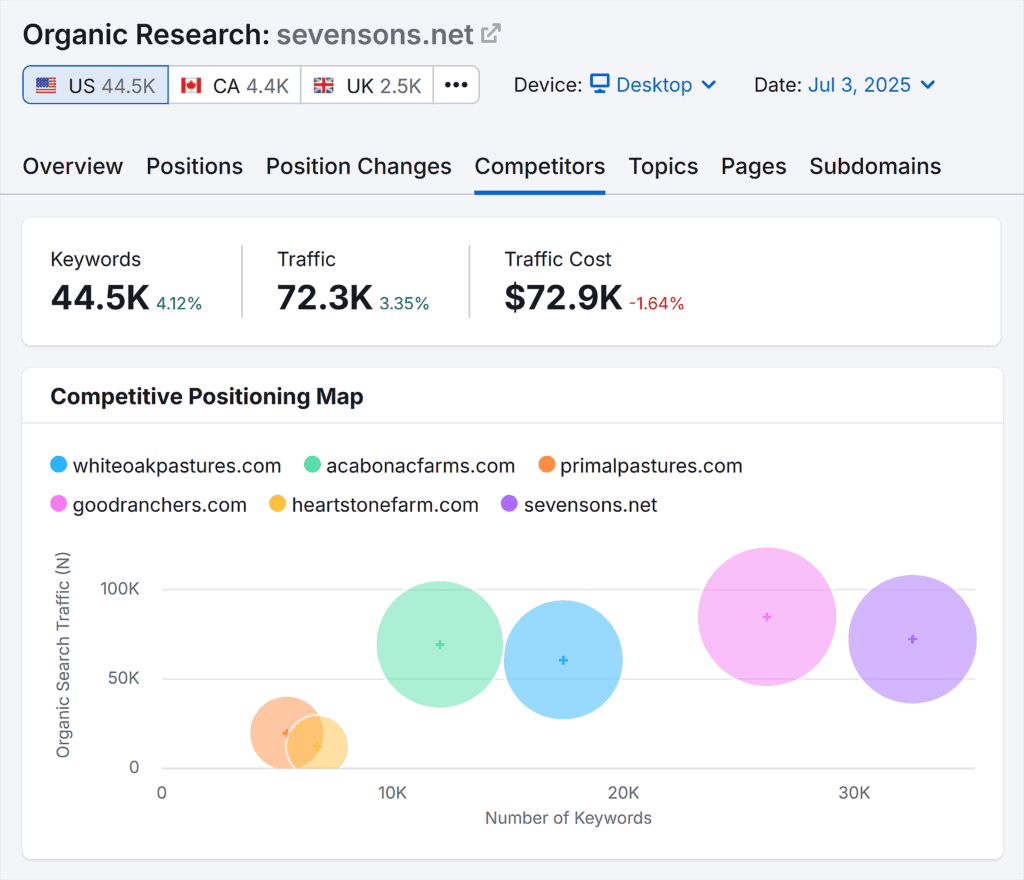
Assuming you searched for a direct competitor, the sites listed are likely to be relevant to you. This is a great way to find competitors in your space who may not have been on your radar.
Take note of how many keywords they rank for and what kind of traffic they’re pulling in. This can reveal both content gaps and high-performing topic clusters worth exploring.
Pay particular attention to competitors with large bubbles — this indicates they’re strong performers in your space.
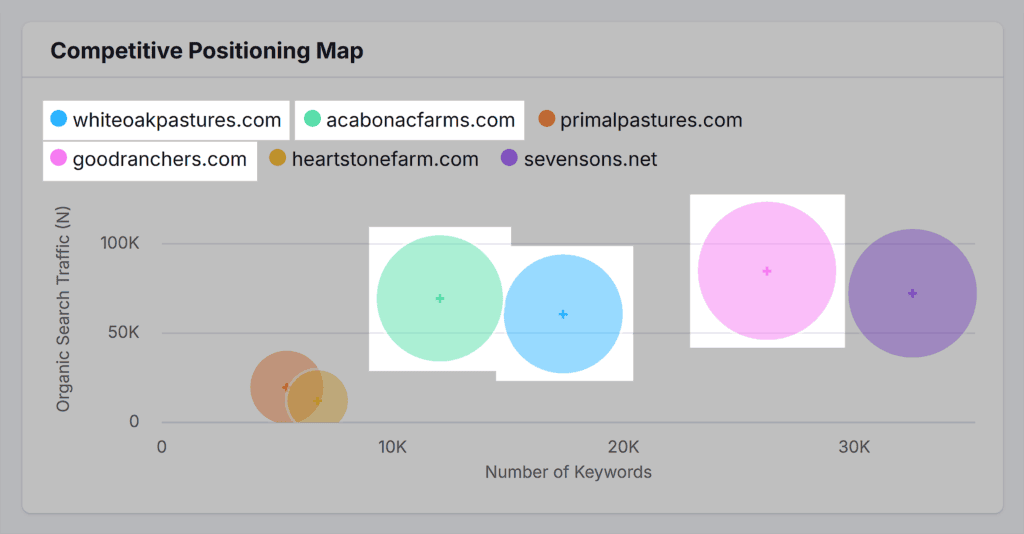
Scroll to the “Organic Competitors” report to learn more about a particular competitor.
Click on any domain you want to explore further.
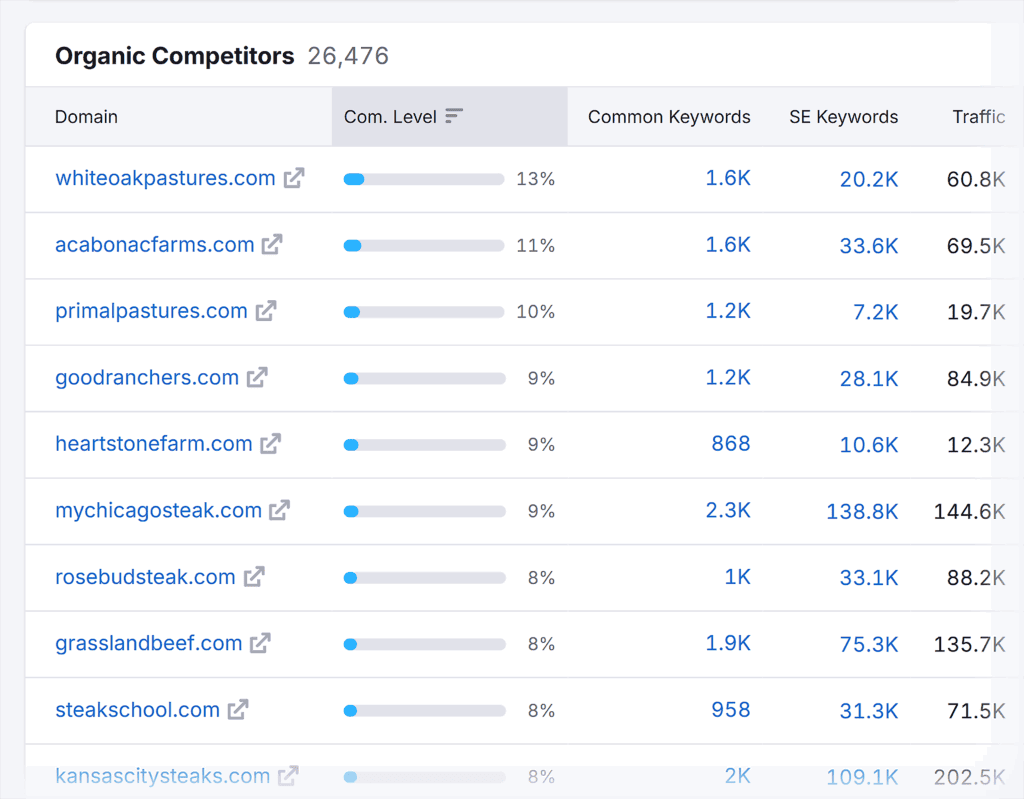
Next, click “Topics” on the menu.
This gives you an insider look at your competitor’s top-performing topics, which you can then use to inform your own content strategy.
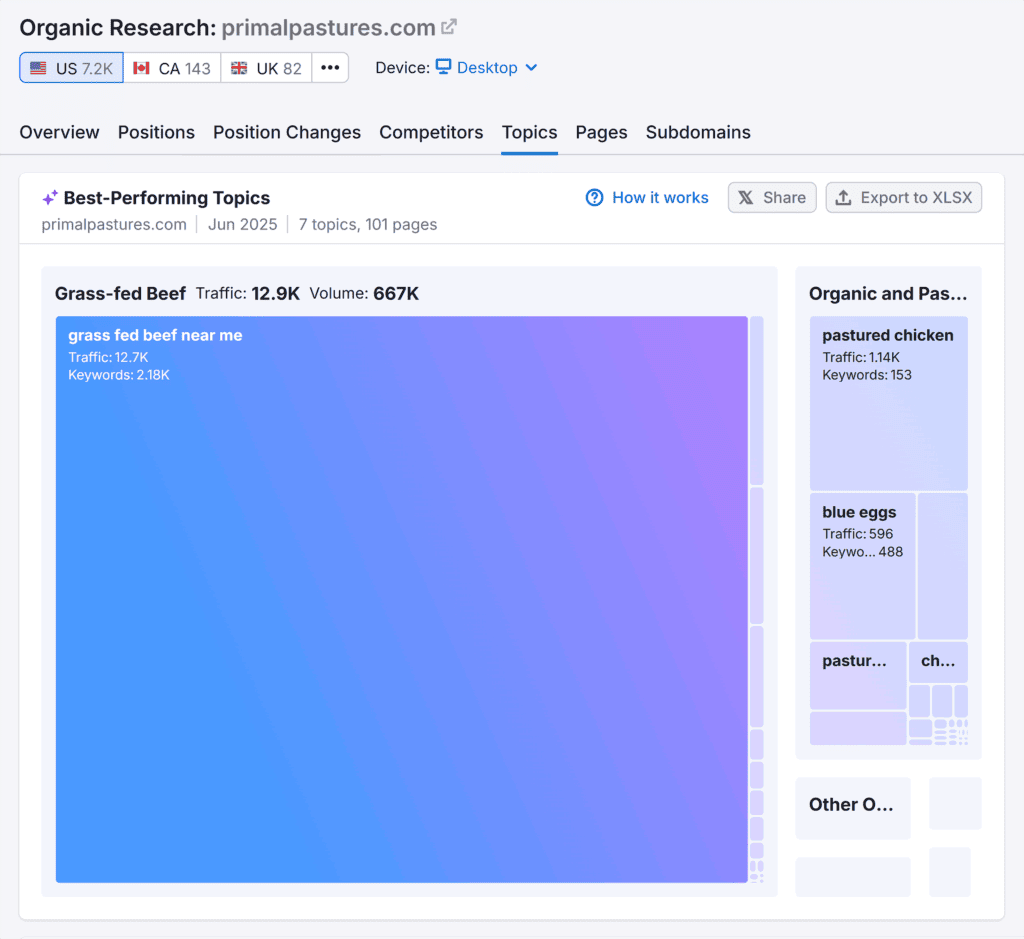
Click any topic to see a list of the top keywords for that page.
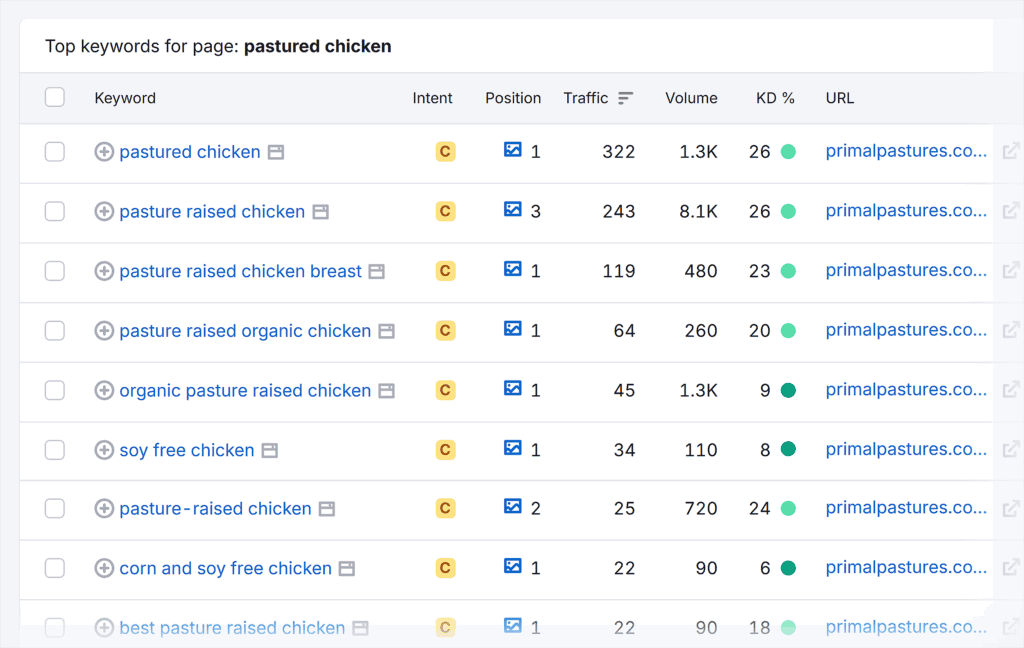
Then, click “Pages” on the menu.
Here, you’ll see any pages your competitor has ranking in Google’s top 100.
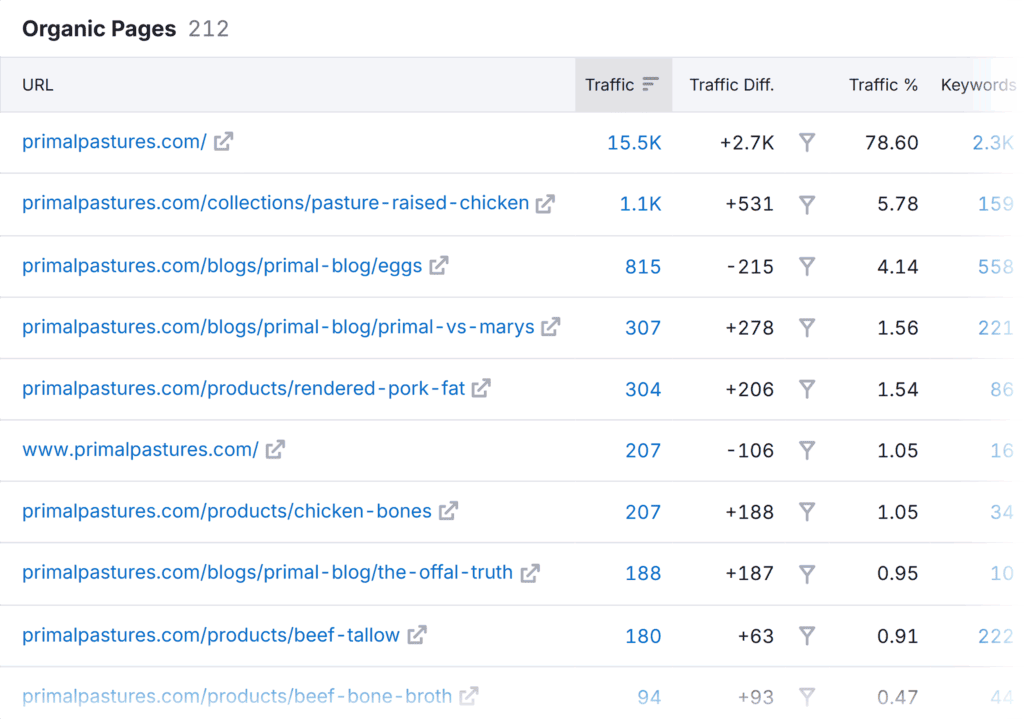
As you scan their top pages, pay attention to a few things:
- Traffic: How many visits each page gets from Google
- Keywords: What it ranks for and how many terms
- Backlinks: Which pages attract the most links?
You’ll also want to note which topics they cover well. Look for weak spots — like outdated stats, vague writing, or missing links to products or services.
Write down which content types get the most views — detailed how-to tutorials, videos, or listicles.
Log the intel you’ve gathered in the “Competitive Analysis” tab of the content strategy template.
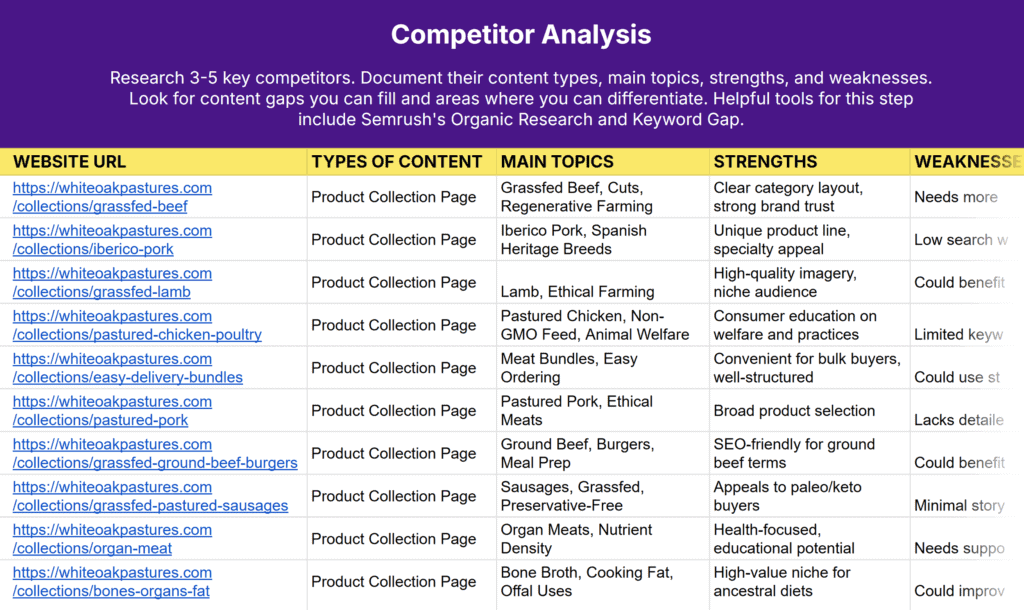
The goal isn’t to copy what your competitors have done. It’s to spot where they fall short — so your content is better, more helpful, and higher-converting.
Perform a Gap Analysis
Next, dive a little deeper into your competitors’ keywords.
This step helps you uncover high-opportunity topics your audience searches for but your site doesn’t cover yet.
Semrush’s Keyword Gap tool can help with this task.
Enter your domain and up to four competitor domains.
In the results, scroll down to the “All keyword details” section, then select the “Missing” or “Weak” filter at the top of the table to narrow the results.
This will show terms your competitors rank for, but your domain doesn’t.

Look for relevant keywords with high search volume but low to medium difficulty to improve your chances of ranking.
For example, if your competitor ranks for “grass-fed beef benefits” and your site doesn’t, that’s a strong candidate for a new guide or blog post.
Add the top opportunities to the “Content Gaps” tab in the content strategy template.
Don’t forget to note where your competitors are excelling — and failing — so you can create stronger content.
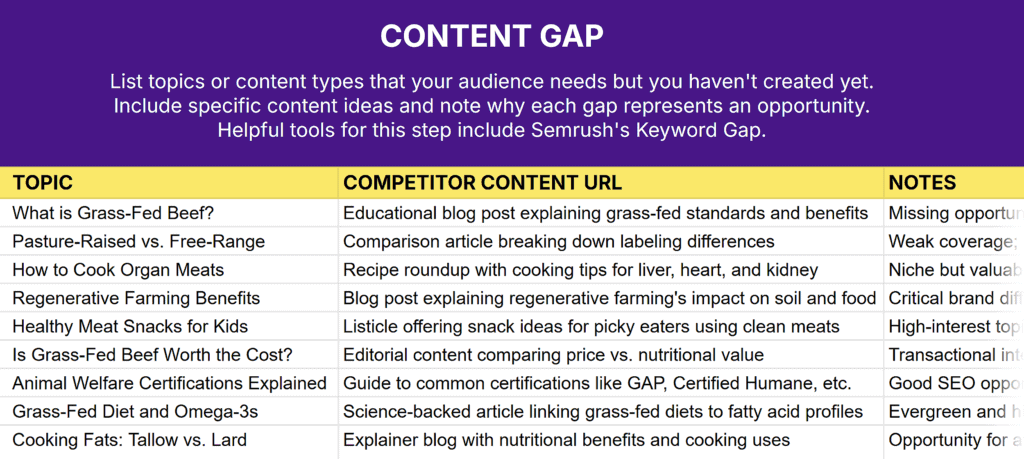
5. Conduct Keyword Research and Build Topic Clusters
Keyword research reveals what your audience is actually searching for. Clustering those keywords helps organize content in a way that builds topical authority, strengthens internal linking, and improves your chances of ranking.
Start by listing keywords related to your product, service, or the pain points uncovered in your content audit or gap analysis. These are your seed keywords — they form the foundation for your keyword research.
For example, “grass-fed beef” and “regenerative farming practices.”
Open the Keyword Research tab in the content strategy planner and drop these terms into the Primary Keywords column.

Use a keyword research tool like Semrush’s Keyword Magic Tool (or Ahrefs, Google Keyword Planner, etc.) to expand each seed keyword into a broader list.
Note: A free Semrush account gives you 10 searches in this tool per day. Or you can use this link to access a 14-day trial on a Semrush Pro subscription.
Look for:
- Long-tail keyword variations
- Related search terms
- Common questions
- Branded vs. unbranded alternatives
Here’s how to do it.
In Semrush, paste in your seed keyword like “grass-fed beef” and hit “Search.”
You’ll instantly get hundreds or thousands of related terms.
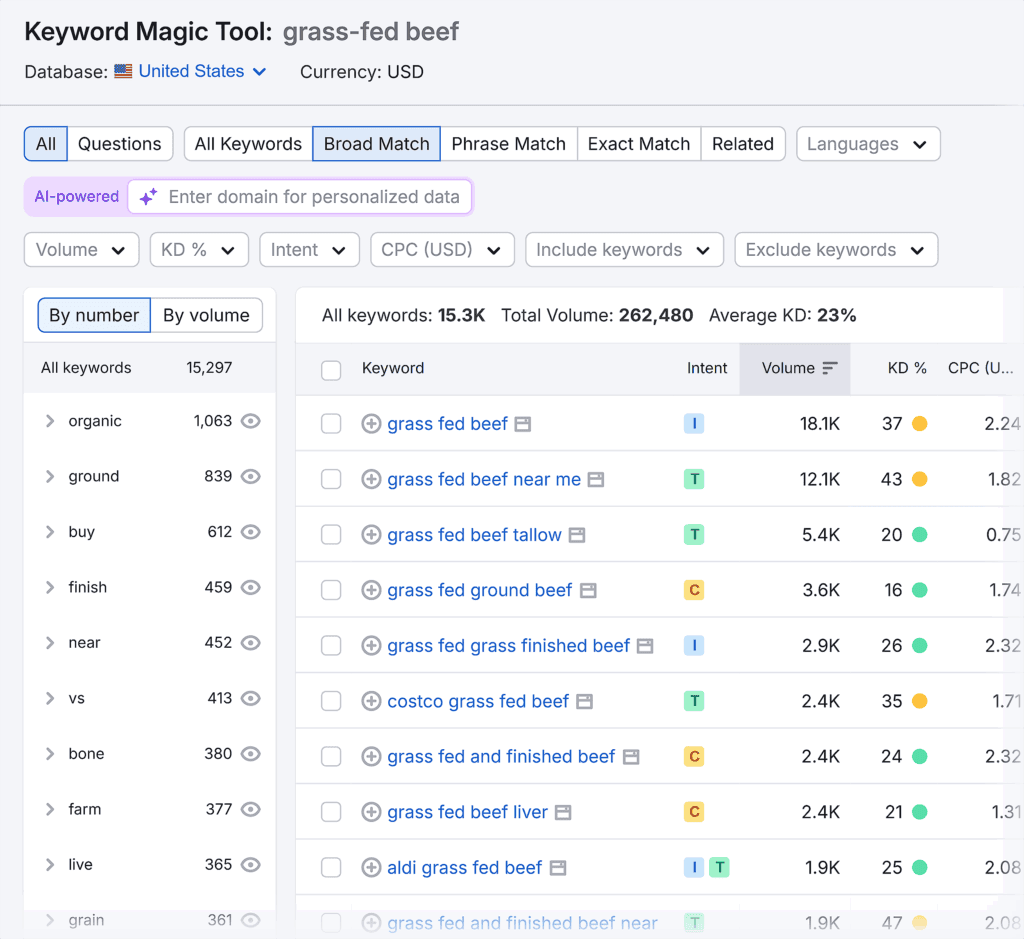
If you want top-of-funnel traffic, focus on informational keywords and questions. For conversions, look for high-intent, product-related terms.
Use the filters to narrow by intent, search volume, and difficulty.
Once you’ve found the best matches, add them to the “Related Keywords” column in your template.
Add the search volume, keyword difficulty, and search intent for each keyword to your template. Aim for a balance of decent search volume with low to moderate keyword difficulty for the best shot at ranking.
Then, use that data to assign a priority level in the “Priority Level” column. This helps you focus on the keywords that offer the best mix of opportunity and relevance.

Now that you’ve expanded your keyword list, consider organizing those keywords into topic clusters.
A topic cluster is a group of related content pieces that all connect to one main topic, with internal links between them to show search engines you’re an authority on that subject.
While you can always revisit this step later, prioritizing clusters now has multiple benefits. It lets you plan topics systematically and strengthens your internal linking strategy.
It can also help prevent duplicate content and keyword cannibalization.
Semrush’s Keyword Strategy Builder lets you easily build out clusters.
Enter your seed keyword, then click “Create list.”
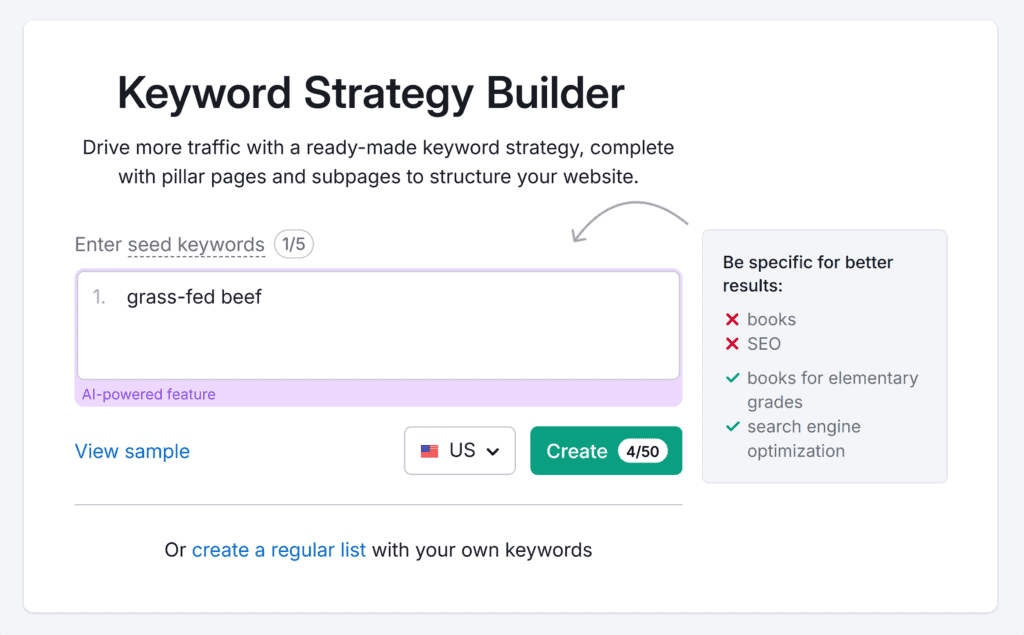
Semrush will automatically group related terms into clusters based on shared SERPs and intent.
Each cluster should include:
- A pillar keyword: a high-value topic you’ll build your content around
- Several supporting keywords: lower-difficulty or long-tail terms
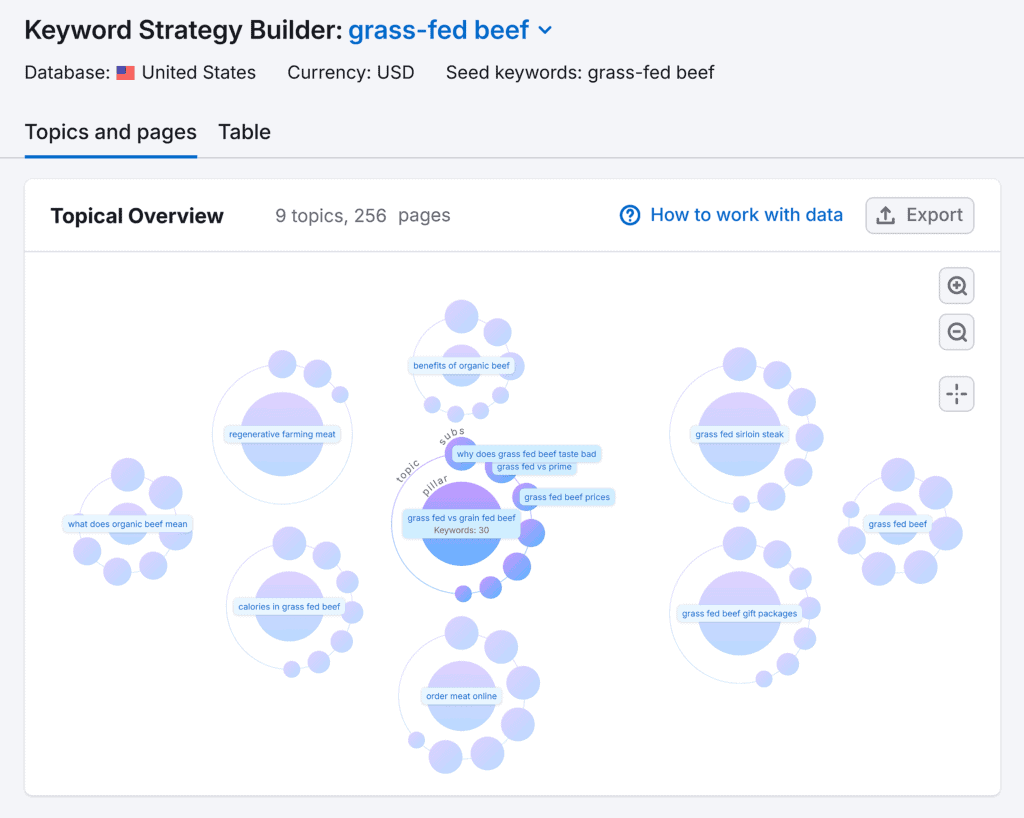
For example, you might use “grass fed beef” as a pillar keyword and build a cluster with supporting topics like “bulk ground beef” and “is grass-fed beef worth it?”
This would lay the foundation for both educational content and product-focused pages.
Not all clusters are worth your time. Prioritize ones that check these boxes:
- Search volume: Is there enough interest?
- Keyword difficulty: Can you realistically rank?
- Business alignment: Does the topic support a product, feature, or goal?
- Content gap: Are your competitors ranking for it, but you’re not?
Focus on clusters that offer real strategic value, not just search volume.
Once you’ve identified your clusters, add them to the Keyword Research tab of the content strategy template. Write down the cluster name and primary keyword. Below that, add the related keywords.
This keeps everything organized and makes it easy to plan content around your clusters during the next phase.
For each keyword or cluster, decide what type of content to create. Use the Target Content Type column in the Keyword Research tab of the content strategy template planner to map it out:
- Pillar post: A comprehensive, cornerstone piece for the main cluster topic
- Blog post: A supporting piece for related long-tails or questions that link back to the pillar
- Downloadable: A lead magnet, like a guide or checklist, typically for high-intent topics

By the end of this step, you’ll have a clear content map built around search intent, SEO goals, and business priorities.
6. Select Content Topics, Formats, and Channels
Now that you know your audience, goals, and competitive landscape, it’s time to decide what to create and where to share it.
Start with high-impact topics.
Use the information you got from the competitive and content gap analysis to identify subjects your audience cares about but aren’t well-covered in your space.
Look for topics that align with your business goals.
For example, if your gap analysis revealed that competitors rank for “grass-fed beef benefits” but don’t explain sourcing practices, that’s your opportunity to create more comprehensive, trustworthy content.
You can also check industry forums and sites like Reddit and Quora to find relevant topics.
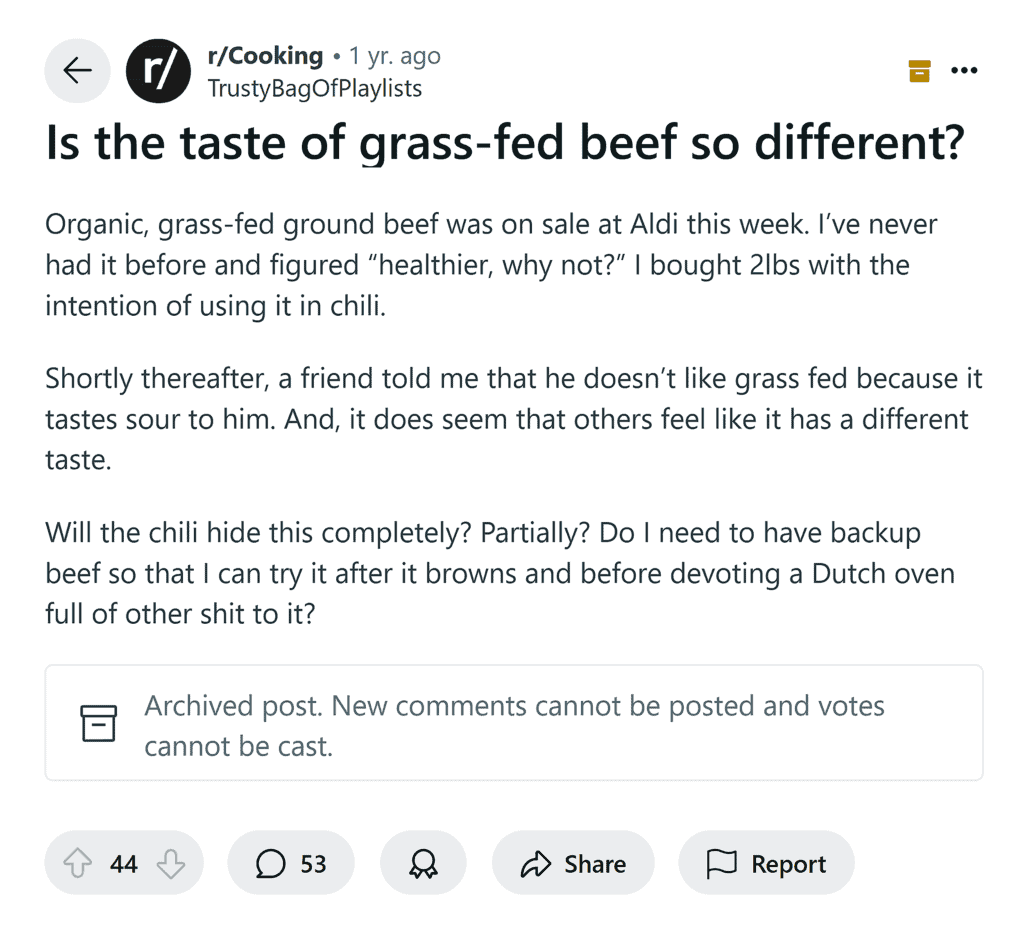
Next, decide what content formats you’ll use.
Different content types serve different goals:
- Blog posts work well for SEO and detailed explanations
- Videos engage audiences on social media and email
- Case studies support sales teams and build credibility
- Guides and resources capture leads and demonstrate expertise
Think about where your audience is in their buying journey. Someone researching “what is grass-fed beef” needs educational content, while someone searching “buy grass-fed beef online” needs product information and clear next steps.
Check Google Analytics to see which channels perform the best for your business.
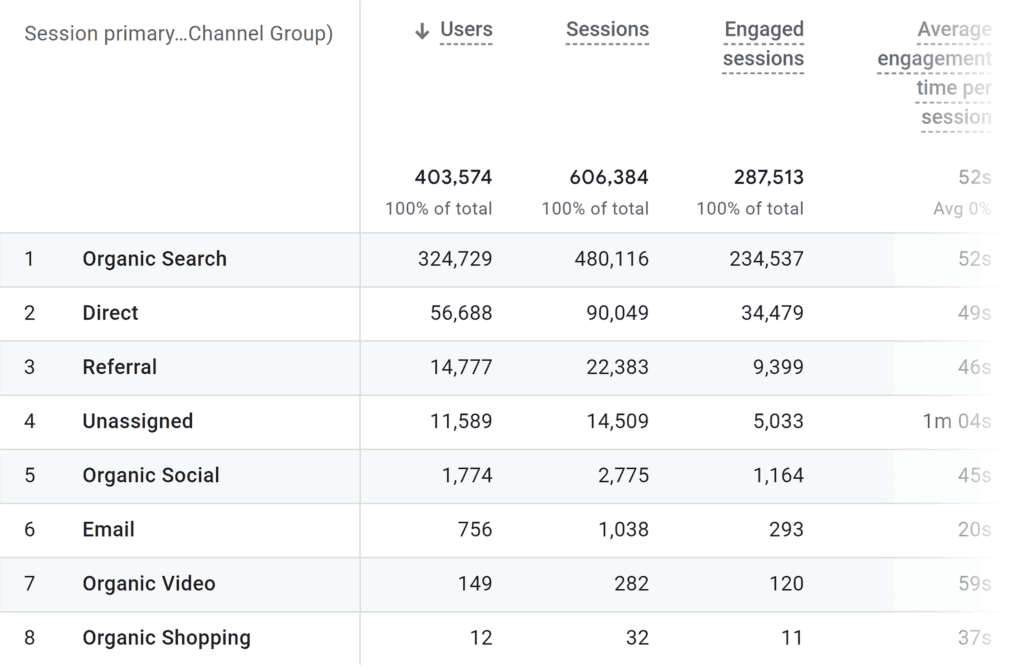
If you don’t have historical data, research where your audience spends their time. Are they most active on Facebook, Instagram, TikTok, or Pinterest — or a combination of these platforms?
Use this information to plan where you’ll promote each piece of content.
Include your repurposing plans to get the most out of each asset. One piece of content can work across multiple channels.
A comprehensive blog post can become a newsletter, social media posts, or even a short video script. This approach saves time while extending your content’s reach.
Document your decisions in the Channel Strategy tab of the template, including the specific topics you’ll cover, formats you’ll use, and where you’ll distribute each piece.
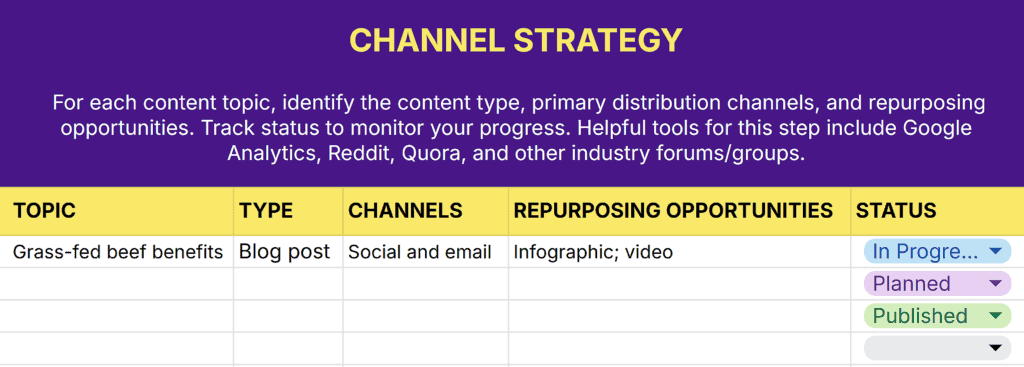
Pro tip: Use AI tools like ChatGPT and Claude to draft content outlines or conduct initial research. This can speed up your workflow and help you scale. Always fact-check AI outputs for accuracy.
7. Define Your Content Workflow
Every content strategy needs a clear process that moves ideas from concept to published content without bottlenecks or missed deadlines.
Every piece of content should follow the same path, whether you’re a solo creator or managing a team. This creates consistency and makes it easier to spot where things get stuck.
Use the “Editorial Calendar” tab to track who’s responsible for each piece of content, key deadlines, status, and more.
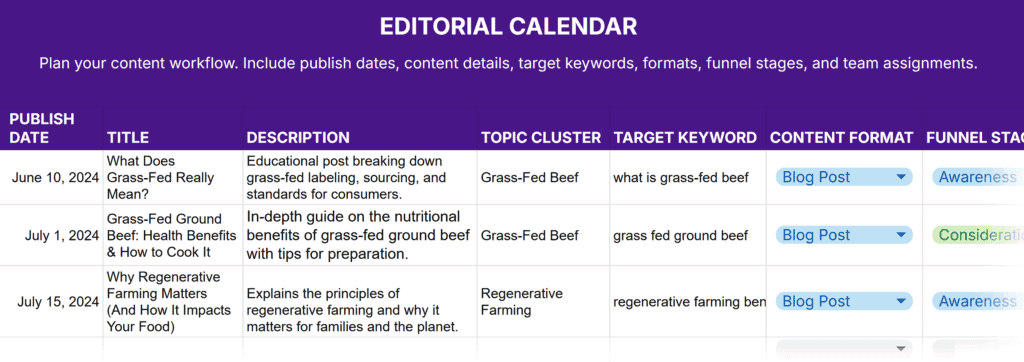
This will look a little different depending on your team size, review steps, and content formats, but here’s a common workflow:
- Ideation and briefing: Research topics, choose keywords, and write a short content brief
- Content creation: Draft the content (this may take a few rounds)
- Editing and optimization: Refine the writing, optimize for SEO, and align with your brand voice
- Approvals: Stakeholders or subject matter experts give final sign-off
- Publishing: Upload, format, and publish on the site or platform
- Repurposing opportunities: Repurpose content for different channels. Summarize articles for LinkedIn and emails, use visuals for Instagram, or turn them into scripts for YouTube.
- Distribution and promotion: Share across channels like email, social, and paid ads
- Performance tracking: Monitor KPIs and take notes for future improvements
Pro tip: Assign clear ownership for each content piece: strategist (brief), creator (draft), editor (polish), approver (final sign-off), promoter (distribution). This prevents issues and ensures accountability.
8. Develop Clear Content Guidelines
Consistent content builds trust and makes your brand instantly recognizable. Whether you’re writing everything yourself or working with a team, clear guidelines ensure every piece sounds like it comes from the same company.
Define your brand voice first. Are you conservative and trustworthy? Edgy and bold? Warm and community-focused?
Choose three to four core traits that reflect how you want your audience to perceive your brand.
Open the Content Guidelines tab in the template to document:
- Brand voice principles: Your core personality traits with specific examples
- Language preferences: Words and phrases you always use or avoid (like “customers” vs. “clients” or avoiding jargon like “synergy”)
- Style standards: Headline formats, capitalization rules, and how you handle numbers and dates
This style guide will be your quality control checklist, so every piece of content reinforces your brand identity.
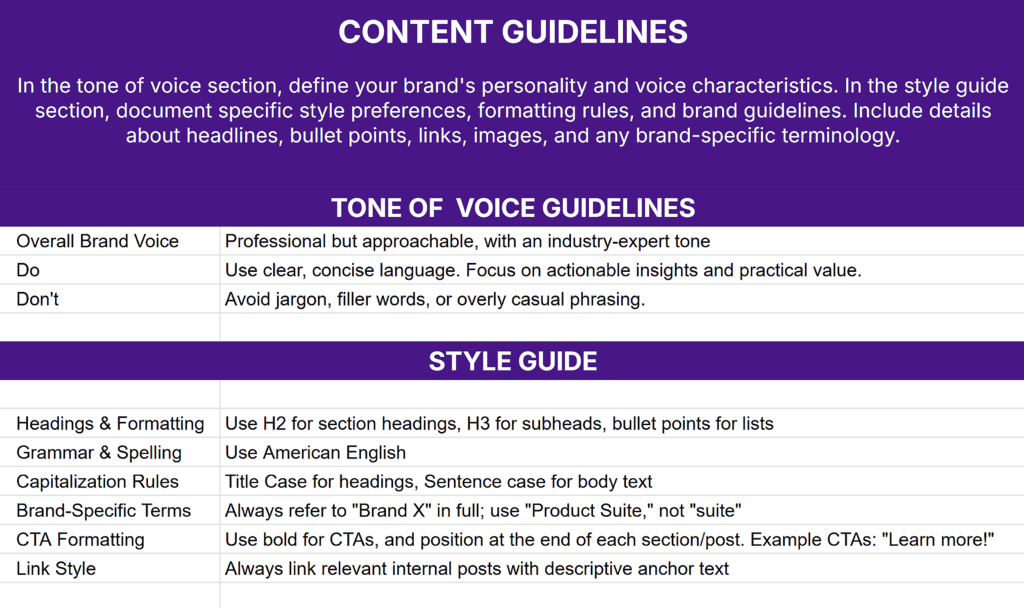
This step is especially useful for working with writers, freelancers, or stakeholders. But even if it’s just you, it helps create a clear standard from which to work.
9. Create an SEO Checklist
SEO starts before the first draft — and doesn’t end once content goes live, either. Optimization should be an ongoing part of your strategy.
Before publishing anything, run through this checklist of SEO best practices to make sure your content is set up to perform well:
- Title tag: Include the primary keyword (50–60 characters)
- Meta description: Summarize the value proposition and include the keyword or a variation for relevance (150–160 characters)
- Headers (H1-H3): Use keywords naturally and structure the content clearly
- Keywords: Use naturally in introduction, headers, body, and conclusion. Avoid keyword stuffing.
- Internal linking: Link to related content using descriptive anchor text
- Readability: Use short paragraphs, bullets, bolding, and visuals
- Images: Optimize images by compressing file size. Add descriptive alt text with target keywords.
- Post-publish review: Revisit after 30 days to update based on performance data and search trends
Use the SEO Checklist tab in the Content Strategy planner as a final pass before hitting publish. It helps keep every piece aligned with SEO goals, without missing the basics.
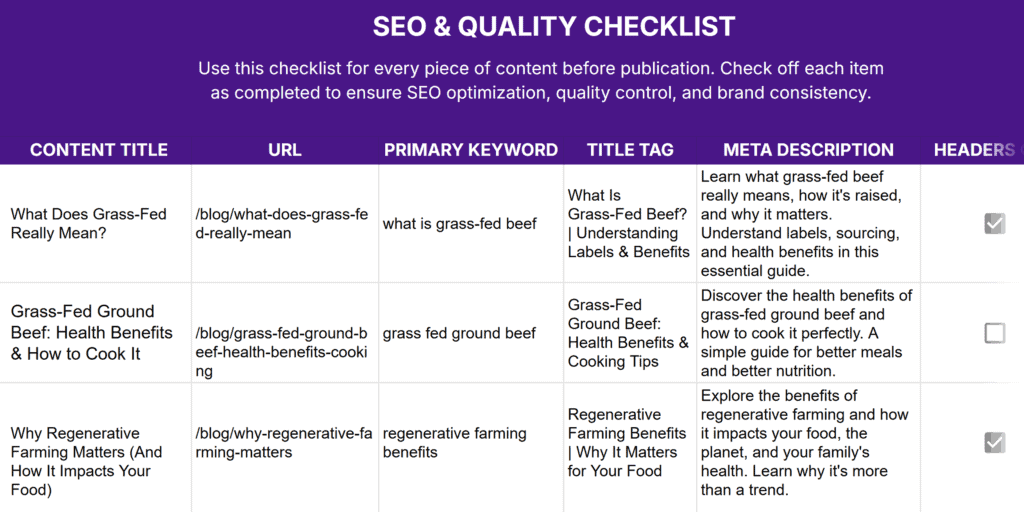
Turn Your Content Strategy Into Action
Now that you’ve filled out the content strategy template, the next step is execution. That means writing, optimizing, and publishing content that gets results.
Need help finding the right tools to support your workflow?
Check out our article on the best content marketing tools. It covers everything from keyword research and content briefs to collaboration and analytics, so you can go from strategy to results faster.